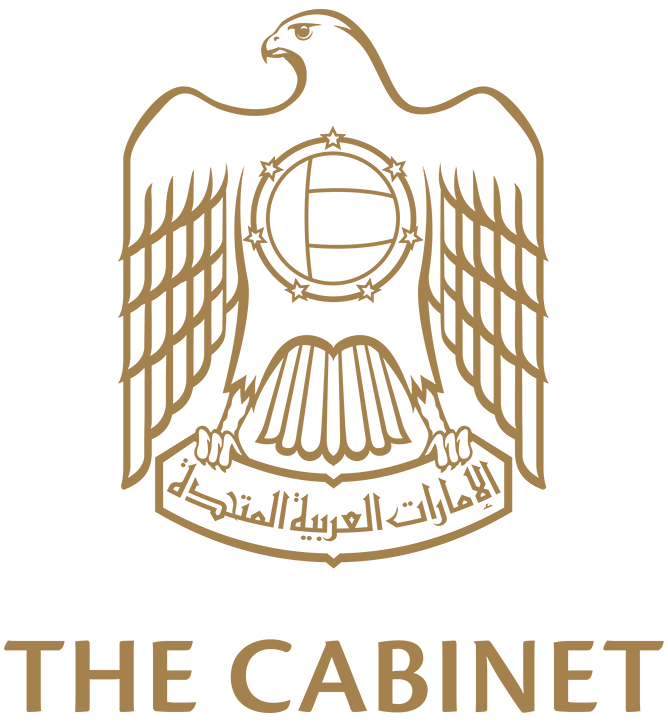- Article (1) Definitions
- Article (2) Conditions and Controls of Licensing of Centers
- Article (3) Conditions of Cadres Working at the Centre
- Article (4) Conditions and Controls for Fertilising a Number of Eggs and Preserving Gametes
- Article (5) Controls of Techniques of Medically Assisted Reproduction
- Article (6) Conditions and Controls of Researches and Experiments
- Article (7) Obligations of Workers in the Centres
- Article (8) Controls and Procedures for Bringing Samples from or Sending it Outside the State
- Article (9) Genetic Diagnosis
- Article (10) Working Models
- Article (11) Executive Resolutions
- Article (12) Repeals
- Article (13) Publication and Enforcement of Resolution
Article (1) Definitions
Definitions provided in the Federal Law No. (7) of 2019 mentioned shall apply to this Resolution, otherwise, the following words and phrases shall have the meanings assigned to each of them, unless the context requires otherwise:
Reproductive Cloning: A process by which a human being is created by transferring a nucleus from a somatic cell nuclear to an enucleated egg. The resulting cell reproduces creating an embryo that is genetically identical to a somatic cell donor.
Law: Federal Law No. (7) of 2019 concerning Medically Assisted Reproduction.
Article (2) Conditions and Controls of Licensing of Centers
Subject to any conditions or controls determined by the Health Authority, the conditions and controls shall be met to license a centre.
First: Conditions and controls of location of centre:
The centre location shall be in line with nature of its activity and services it provides. It is better to be at the ground floor. If it is located on a floor other than the ground floor, an elevator accommodating a patient carrier should be available, taking into account the environmental and health conditions of the location.
Second: Conditions and controls of contents of centre:
The centre shall at least establish a clinic and rooms for treatment, operations and laboratory in accordance with the specification and requirements determined by a decision from the Minister in coordination with other Health Authorities.
Third: Conditions and controls of medical equipment and devices of centre:
The medical equipment and devices determined by a decision from the Minister in coordination with other Health Authorities shall be available at the centre.
Article (3) Conditions of Cadres Working at the Centre
Every natural or legal applying for a license to establish a centre in the State shall be committed to employ the competent health, technical and administrative cadres required for the work of the centre. The centre cadres shall be required to meet the following:
First: General Conditions:
a. To not have been convicted of a custodial penalty in a crime against honour and trust, unless he has been rehabilitated;
b. To not have been dismissed from his job by a judgement nor a disciplinary decision has been issued for removing him from service because he is not honest;
c. To not have been convicted for violating the controls and standards of technique of medically assisted reproduction with respect to honesty in performing his work; and
d. Any other standards set forth by the Health Authority.
Second: Conditions of health and technical cadre:
In addition to the general conditions stated above, the health and technical cadre shall meet the following:
a. Obtaining the required licenses from the competent Health Authority; and
b. Having the qualifications and experiences determined by the decision issued by the Minister in coordination with other Health Authorities.
Article (4) Conditions and Controls for Fertilising a Number of Eggs and Preserving Gametes
Upon fertilising a number of eggs sufficient for implantation for more than once, the centres shall take the maximum possible medical measures or other measures that prevent the fertilised egg samples from being mixed with unfertilised eggs or the sperm samples from being mixed with other samples, or using them in contravention to the provisions of the Law and this Resolution by providing the following:
1. A chart clarifying the steps of preservation.
2. A mechanism to ensure the place and time of preservation, with the necessity to ensure that there is a special mechanism for determining the procedures followed regarding samples stating the steps followed if it is not possible to find a sample of a person.
3. A mechanism to ensure the success of preservation processes and the success rates of these processes, provided that it includes the forms approved by the laboratories and states the number of years required to preserve the samples.
4. The mechanism followed according to the standards approved on disposing of the frozen samples of fertilised or unfertilised eggs or sperm samples by destructing them in case of death of one of spouses or if they get divorced.
5. A mechanism for the separation and preservation of samples collected from persons with infectious disease away from other preserved samples.
6. Obtaining the consent of the parties concerned to preserve unfertilised eggs by freezing, according to the relevant model.
7. Obtaining the consent of the parties concerned to preserve semen by freezing, according to the relevant model.
8. Obtaining the consent of the sample owners to preserve the fertilised eggs, according to the relevant model.
9. Notifying the healthcare authority when preserving fertilised and unfertilised eggs and semen by freezing, according to the mechanism determined by the healthcare authority, provided that this mechanism guarantees the protection of the confidentiality of data and information of the owners of these samples.
10. Adhering to the controls and models approved and applicable in this field.
Article (5) Controls of Techniques of Medically Assisted Reproduction
Upon commencing the techniques of medically assisted reproduction and preparing the implantable eggs, the centre shall be committed to the following:
1. The number of times of stimulation of ovaries to obtain eggs for fertilisation is no more than (6) six times per year; and
2. The number of embryos transferred to the womb is not more than two.
Article (6) Conditions and Controls of Researches and Experiments
Subject to provisions of Federal Decree-Law No. (4) of 2016 mentioned, the centre may do researches or experiments on the unfertilised and fertilised eggs and sperm in accordance with the following conditions and controls:
1. Not to do researches of experiments for reproductive cloning;
2. Not to do researches of experiments for selection of genetic traits for reproduction;
3. Not to do researches of experiments for commercial purposes;
4. Not to do researches of experiments involving any type of change of human genetic structure (HUMAN GENOME);
5. Obtaining a prior consent from the authority competent with health research at the Ministry or the competent Health Authority before commencing the research;
6. Purpose of the scientific research shall be any of the following:
a. Increasing knowledge with regard to serious cases or diseases or other;
b. Developing treatments for serious cases or diseases or other;
c. Developing treatment for fertility problems;
d. Increasing knowledge with regard to problems leading to abortion;
e. Developing methods for discovering the disorder of chromosomes, genes or mitochondria before implantation into womb;
f. Increasing knowledge with regard to embryonic development;
g. Increasing knowledge with regard to freezing of gametes or embryos; and
h. Developing methods for discovering the disorder of chromosomes, genetic or epigenetic disorder (Epigenetics).
7. Requirements of scientific research legally stipulated and approved from the Ministry or Health Authority shall be available;
8. Obtaining written consent from both spouses or interested parties, as the case may be;
9. Spouses or interested parties may refrain from agreeing on the research or reverse it. Also, they may request its amendment at any of the research stages or amend it once notified, provided this does not negatively affect the treatment of spouses or interested parties in the centre;
10. Spouses or interested parties shall be provided with the following information before obtaining the consent:
a. Explanation to spouses that is they do not agree on the research, this would not negatively affect their treatment in the centre;
b. Purpose of scientific research to be done and the effect resulting from this research; and
c. Period expected for finishing the research.
11.Principle researcher and scientific research body shall ensure that there is no conflict between the interest of the centre and interest of spouses or interested parties;
12. Upon using the gametes or embryos in research, the following shall be taken into account:
a. Not to be used in purpose other than stated for the research;
b. Consent of spouses or interested parties on the research is not for a cash or in-kind equivalent or due to physical or moral coercion or such consent is based on cheating or fraud; and
c. Adhering to the research protocol in advance and not to introduce any change thereto without new consent from the competent authority.
13. If the research uses eggs or sperm used from incapable or incompetent person, a prior written consent should be obtained from the legal guardian or representative to be used in this research; and
14. Any other conditions or controls set by the Health Authority.
Article (7) Obligations of Workers in the Centres
Workers in the centres shall carry out their works in accordance with the protocols applicable in the techniques of medically assisted reproduction, adhere to precise regulation in dealing with sperm, unfertilised eggs and embryos and exercise utmost care and caution to prevent its use, exploitation or replacement, leading to the intermixing of genealogical lines. They shall especially:
1. Adopt modern preventive means against bacteria and viruses causing these infectious diseases, in addition to sterilise all used tools and receptacles, and separate the samples proven to be affected by communicable and infectious diseases, ensuring they are not intermixed with valid samples in all stages of treatment in a laboratory on the embryos;
2. Ensure that the nutritional settings are free from any microbes, sterilised and able to produce valid genes;
3. Record the degree of maturity of eggs and evaluate the embryos and how to deal with immature and mature eggs;
4. Identify the quantity and quality of sperm to be used for completing the fertilisation;
5. Record complete information on the course of treatment in the medical file for all references of the centre, provided it shall include -as the case may be- the following:
a. Number of eggs withdrawn from the varies;
b. Path of each withdrawn egg;
c. Number of fertilised eggs;
d. Characteristics of each fetus and number of cells of fetus and its gender;
e. Path of each fetus (implantation, destruction, freezing, use for scientific research purposes or any other procedures taken thereon);
f. Characteristics of sample of sperm and path of unused samples;
g. Recording the name of technician, manager of laboratory and attending physician in the record of each patient under treatment, along with the signature of each of them;
h. Recording the source of nutritional setting and source of liquid protein used in implantation, signed by the laboratory technician and manager; and
i. Coordinating between the technical staff and attending medical staff to know the path of transferred embryos and recording these results in their records.
6. Recording the following information by the officer of laboratory when receiving a sample of sperm and attaching it to the sample:
a. Time of receipt of sample;
b. Method of obtaining it;
c. Time of last sexual intercourse;
d. Extreme temperature changes;
e. Respectable does not accommodate full sample; and
f. Clarification of any problems in liquidity of sample.
7. Being aware of advantages and characteristics of gases used in incubators and ensuring they meet the medical specifications;
8. Ensuring the percentages of concentration of gases and internal temperature setting of incubators and recording these percentages; and
9. Being aware of procedures taken if it is not possible to obtain specific degree of percentages of gas concentration in incubators.
Article (8) Controls and Procedures for Bringing Samples from or Sending it Outside the State
It is permissible to send unfertilised or fertilised eggs or frozen sperm prepared inside the State, outside the State or bring these samples to the State if they are prepared outside it in accordance with the following controls and procedures:
1. Transfer of fertilised eggs to or from the State shall be limited to married couples or parties concerned.
2. Before commencing the transfer, the centre shall ensure all the following documents:
a. Copies of all licenses and certificates of accreditation for both centres (transferor and transferee);
b. Acknowledgements and approvals signed by spouses or interested parties, as the case may be, with regard to procedures of bringing or sending transferred samples; and
c. Results of medical test of infectious diseases for transferred samples, including: Hepatitis (B), Hepatitis (C) and HIV, which are made at freezing or any other test determined by the Health Authority.
3. These documents shall be kept in the medical file of the spouses or interested parties. Patients willing to transfer their frozen samples (gametes and/or embryos) shall be notified that the centre has the right to suspend the procedure of transfer for any legal or technical reasons it deems, that the transfer of sample from or to the State should be made according to transfer standards approved from the Health Authority and that no application violating above conditions shall be accepted;
4. Verifying the identity of spouses or interested parties willing to transfer and matching it up with the transfer application; and
5. Spouses or interested parties willing to transfer shall sign an acknowledgement of approval of transfer.
Article (9) Genetic Diagnosis
Without prejudice to provisions of Article (14) of the Law, it is permissible to perform the genetic diagnosis process using the techniques of genetic diagnosis of embryos before returning for implantation in the womb in accordance with the following controls and procedures:
1. Identifying the need to perform a genetic test before implantation in the womb by the geneticist of the centre or the geneticist with whom the centre contracts within the laboratories of genetic tests;
2. The centre shall ensure that the multidisciplinary team participates in providing the service of genetic test, provided that the team includes physicians specialised in reproduction, embryologist and geneticist;
3. Obtaining a written consent from the spouses willing to perform the genetic test. The centre shall ensure providing the information clarifying the process, provided it shall include explanations on the points listed within the related model, especially the following:
a. There are medical genetic reasons in the family or a spouse requiring the test;
b. Followed procedure and resulting risks;
c. Genetic test does not guarantee the pregnancy or non-occurrence of abortion in case of pregnancy;
d. Financial costs and resulting psychological effects if pregnancy does not occur although genetic test was performed to the embryos before implantation in the womb; and
e. Percentages and rates of misdiagnosis related to these tests, including the possibility of wrong or false results.
4. Upon performing the genetic test for embryos for diagnosing the HLA-matched embryos, the centre must obtain a medical report from the attending physician of the affected son recommending this diagnosis for treating the affected son.
Article (10) Working Models
The models stipulated in this Resolution shall be issued by a decision from the Minister in coordination with other Health Authorities.
Article (11) Executive Resolutions
The Minister shall issue the resolutions required to apply the provisions of this Resolution.
Article (12) Repeals
Any provision that violates or contradicts the provisions of this Resolution shall be repealed.
Article (13) Publication and Enforcement of Resolution
This Resolution shall be published in the Official Gazette and shall be enforced as of the day following the date of its publication.
Translated in cooperation with





